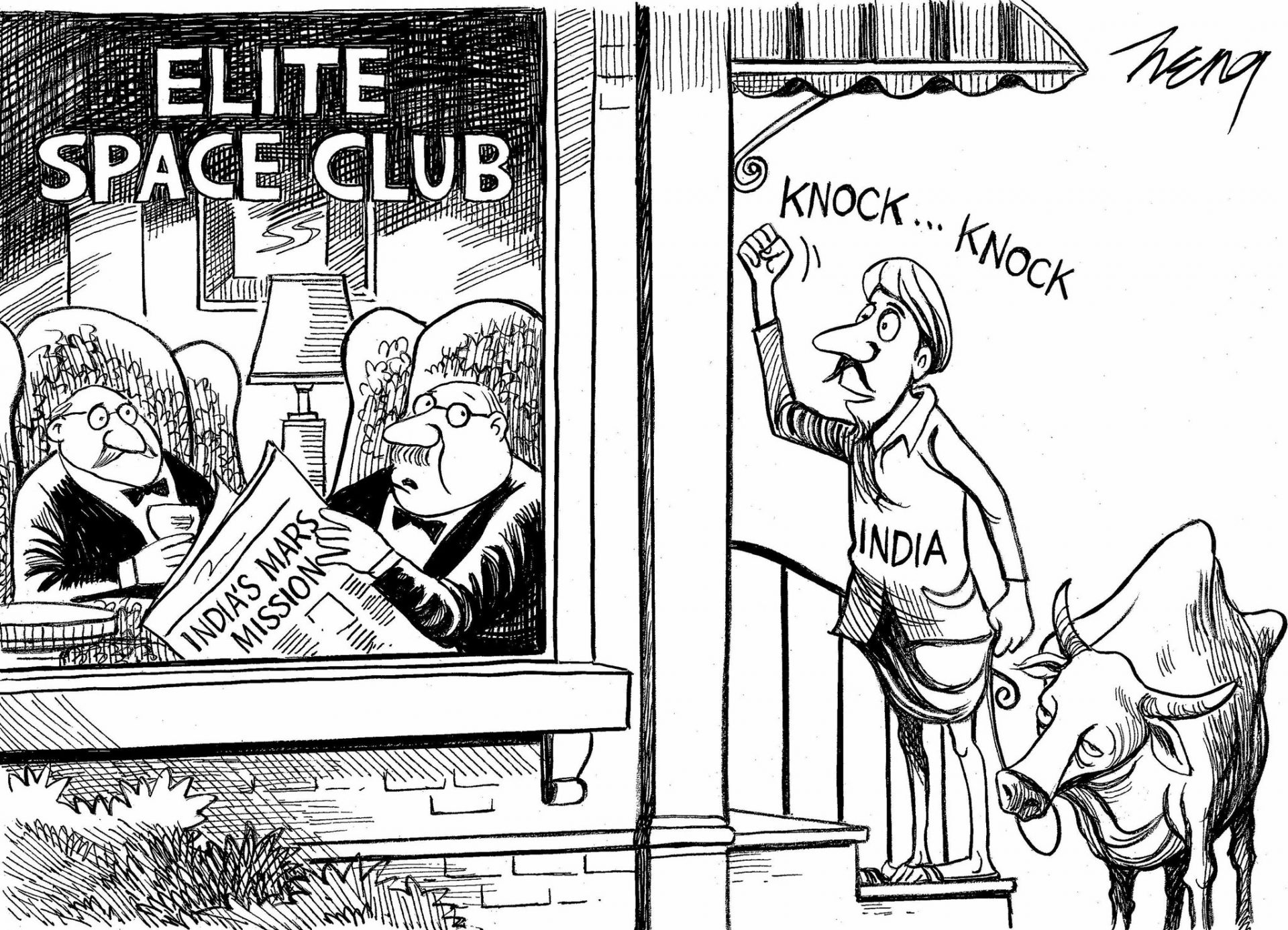Early in 2015, Oxford toted up the word “jugaad” in its latest edition of the Advanced Learner’s Dictionary. Probably because it wanted to mete out justice to the word while describing its unique quality of cranking out simple, low-cost, and innovative fixes (something that we Indians seem to excel at). This article is dedicated to the 3 best jugaad stories in India which can teach us all some invaluable lessons on how to achieve innovation!
An innovative “slingshot” method was used wherein the spacecraft orbited the earth for several weeks garnering enough velocity to re-launch with renewed vigor.
A mini-controversy was stirred when New York Times depicted a cartoon showing an Indian (who would have probably travelled in a creaky bullock cart) knocking at the doors of the Elite space club, claiming his rightful place in it.
The world may have mocked or marveled at the unique and low-cost means of launching the Mars orbiter, but the Mangalyaan success did reaffirm India’s position as a reliable and effective destination for other countries to launch and install their satellites at an economical cost.
Here was India shifting the gears of fresh ideas and showing the world how despite having a poor infrastructure and lower economical means, it could carry out a successful Mars mission. Innovation doesn’t need you to break the bank – a creative and a determined mind is all it takes to conjure up and execute a big idea.
2. The Tata Nano Uprising:
This is another great example of frugal innovation at its best! When Tata Nano was launched, it immediately became exclusive thanks to its unbelievable low cost (it is the world’s cheapest car). This was neatly summed up in Amul’s ad that stated, “Nano Ya na maano” (believe it or not)!
On the other hand, the minimalist “no-bells-and-whistles” design lowered its production cost. For example, the use of plastic instead of metal, and a bevy of other lighter and cheaper components meant that the car became even more energy-efficient and affordable.
The irony is that the low-cost production model was not something that was not unknown to the other players. But they refused to touch it by the bargepole since this would have meant exploring a market segment that didn’t exist. Nano tried to reach out to the buyers of two-wheelers through its ad campaigns, and not the customers of the regular car segments.
The key learning for us is to be bold and adopt out-of-the-box techniques, and also explore fresher and newer markets, or create one (if it doesn’t exist).
3. Mumbai Dabbawallahs – The Ultimate Jugaadus!
The jugaad of the Mumbai dabbawallas (lunch box delivery men) is certainly the one that takes the cake, buns, tarts, and pastries too! They operate on a simple business model that includes excellent coordination across several delivery/collection/sorting zones as well as a manual coding system (which can be understood even by illiterates). There is no use of any elaborate or modern technology here. They have no capital investment and operate at a low cost by making best use of the limited resources available (such as Mumbai’s affordable transport services and cheap/committed labour). Yet, the dabbawallahs record an accuracy rate of 99.999999 percent which translates to 1 error for every 16 million transactions!
Source: 3 Great Indian “Jugaads” That Teach Us Invaluable Lessons on Innovation




